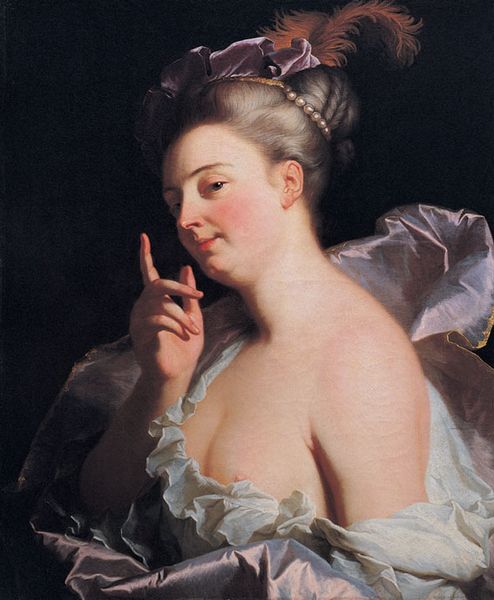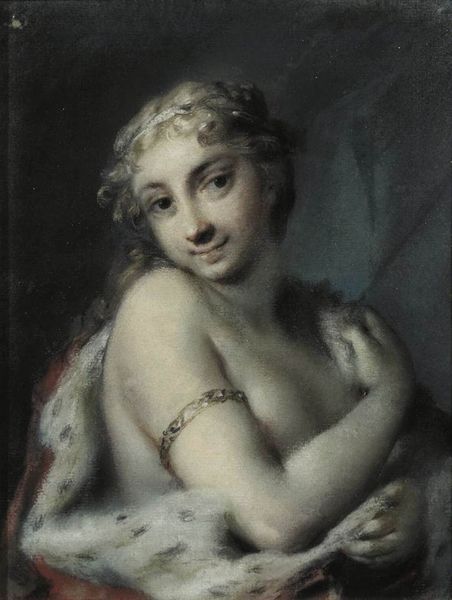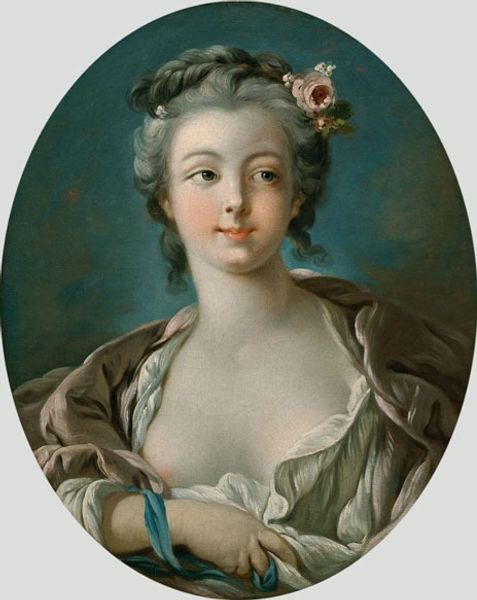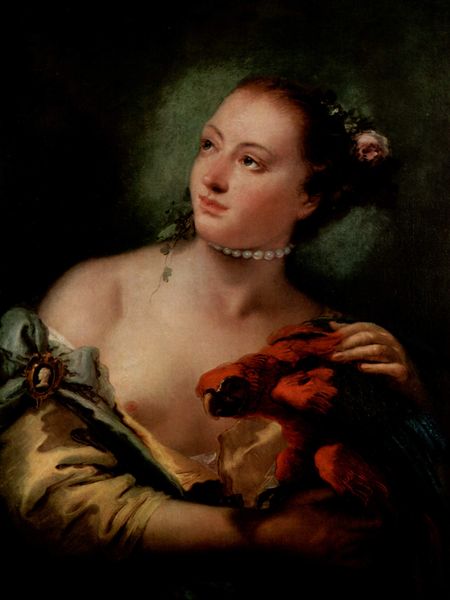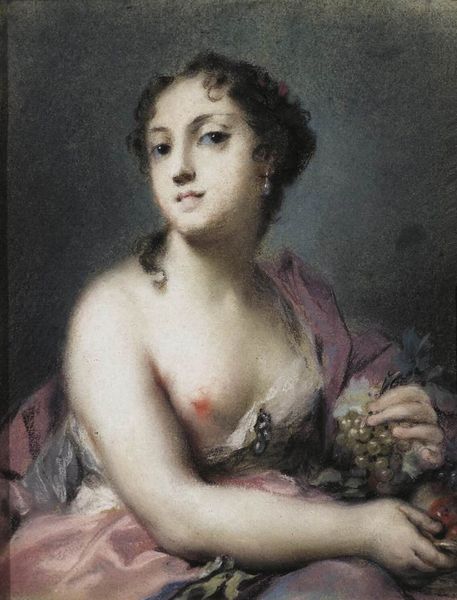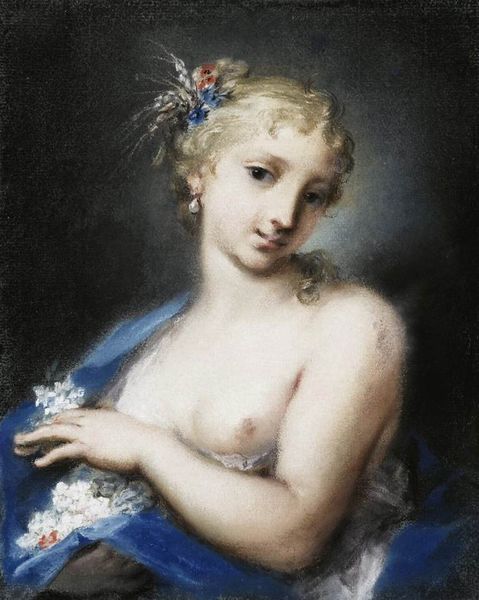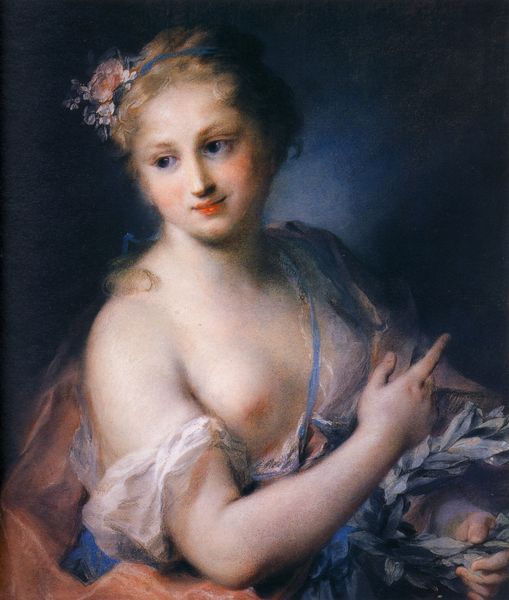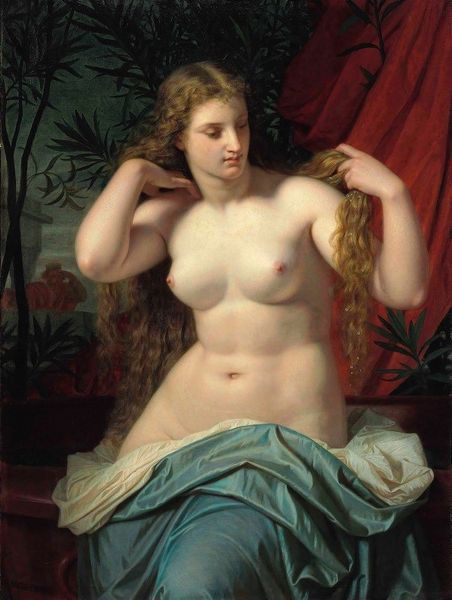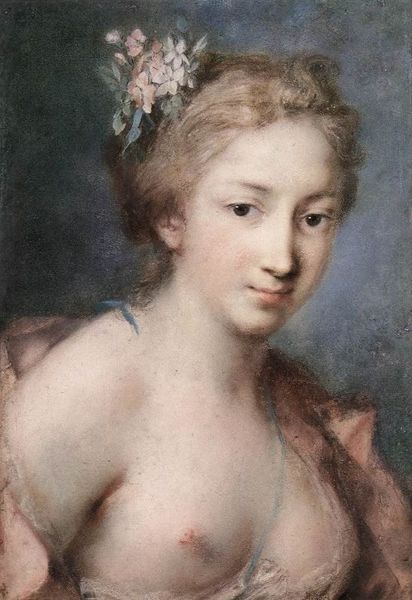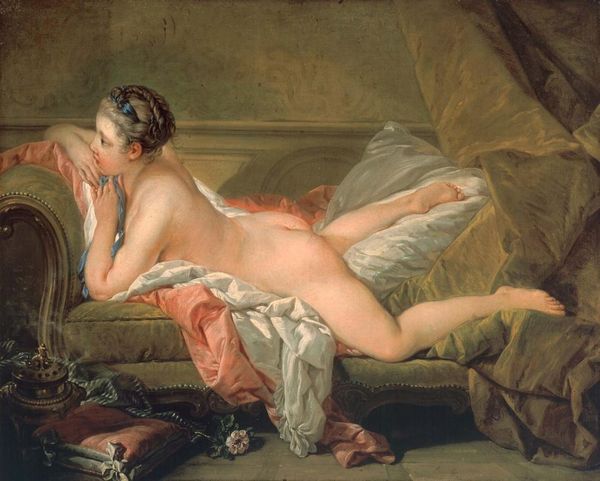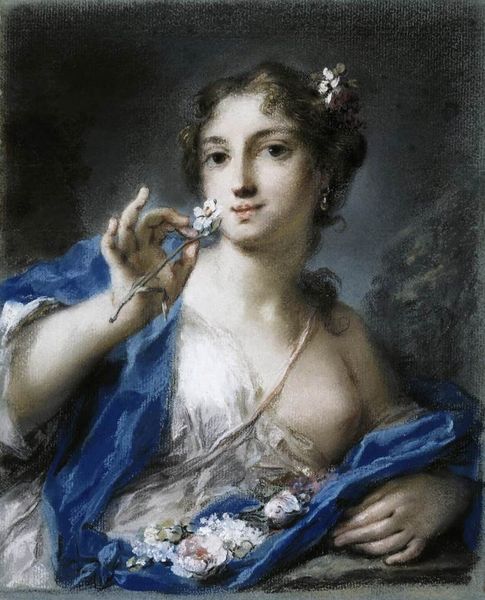
painting, oil-paint
#
portrait
#
venetian-painting
#
allegory
#
baroque
#
painting
#
oil-paint
#
figuration
#
mythology
#
painting painterly
#
nude
#
rococo
Copyright: Public Domain: Artvee
Curator: Here we have "Portrait of a Lady as Flora," attributed to Giovanni Battista Tiepolo, a luscious example of Venetian painting. What’s your first impression? Editor: She's bathed in this hazy, golden light – almost edible, like honey. It feels… theatrical, yet grounded somehow by her rather knowing gaze. Is that too simplistic? Curator: Not at all! The theatricality is certainly there. Think about the historical context: Venice, known for its carnivals and masquerades. Portraits like this blurred the lines between reality and fantasy. And yes, that golden light would come directly from his chosen pigments. We should also consider labor conditions, and that Tiepolo oversaw a substantial workshop. Editor: Oh, definitely. All those apprentices grinding pigments... Anyway, she looks so confident, almost challenging the viewer. That casual drape of fabric - is that meant to titillate, or empower? I mean, what do *I* bring to this exchange? Curator: Both, perhaps. Tiepolo, even with workshop support, would have had significant access to high-quality fabrics and dyes – indicative of Venice’s mercantile prowess. Consider the complex layering of materials used here, both in the art and in the making of this lady's garment! Editor: Right, it's about wealth and access to those lush goods and then translating it through paint. All this artifice! Curator: The artifice isn't the whole story; Flora, the Roman goddess of springtime, was tied to ideas of abundance, beauty and a golden age. Allegory played a significant part. It reflects a consumerist society showcasing itself. Editor: True, I suppose I see it as an actress trying out her roles to me. This whole society obsessed with masquerade, of portraying its ideals and hopes. All a bit overwhelming and yet... totally enchanting. Curator: In closing, it's fascinating to examine Tiepolo’s engagement with allegory and class display. I find it quite brilliant. Editor: Yeah, maybe I misjudged Flora here. She doesn't feel passive; she embodies an agency and creative expression that comes across centuries later. Fascinating indeed!
Comments
No comments
Be the first to comment and join the conversation on the ultimate creative platform.
